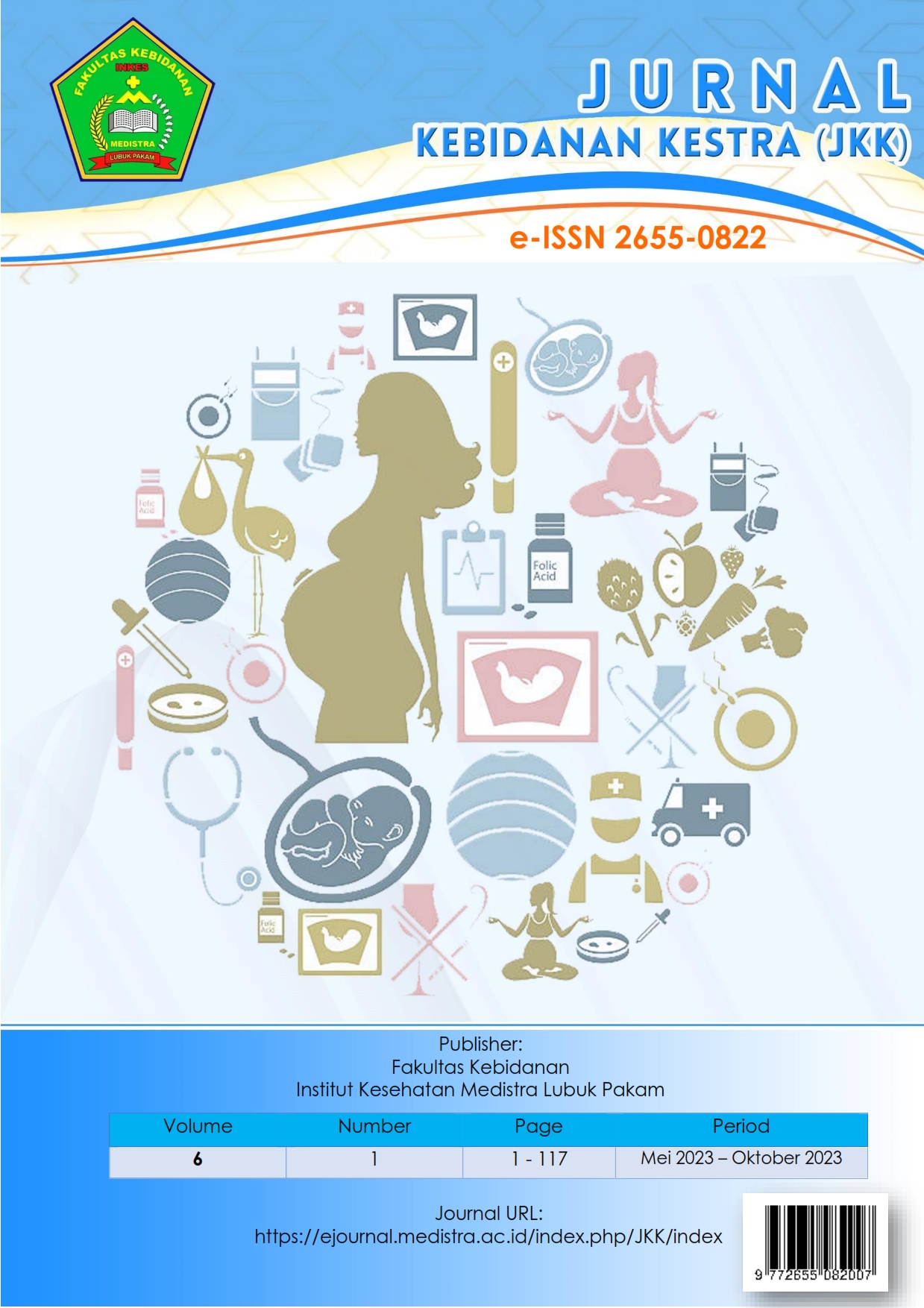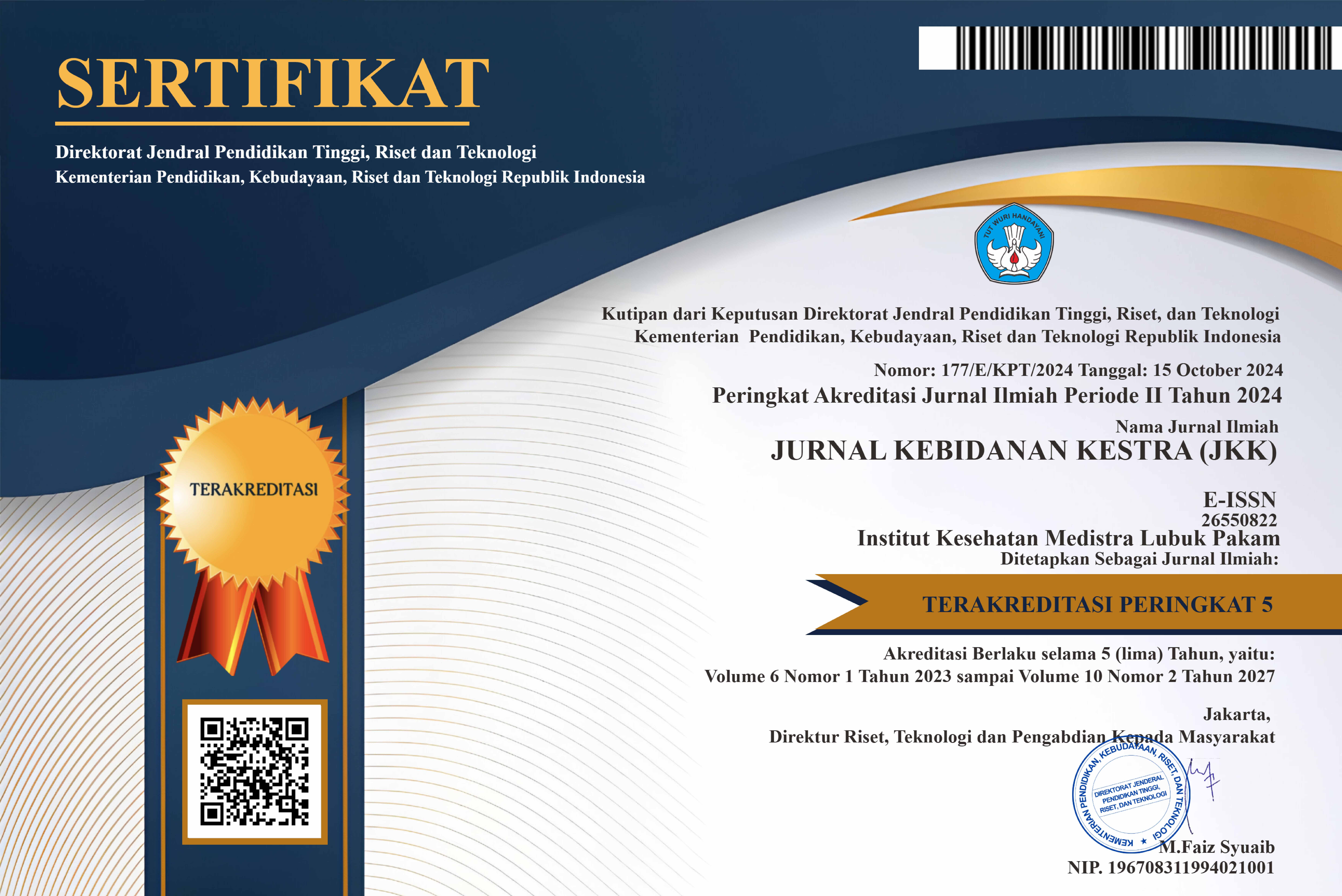Identification Of Early Warning Signs In Patients At Risk Of Acute Respiratory Emergencies
DOI:
https://doi.org/10.35451/jkk.v6i1.2534Keywords:
Early warning signs, Risiko kegawatdaruratan, kardiovaskularAbstract
Early identification of warning signs is the key to preventing further complications and reducing the death rate due to this condition. This study aims to identify early warning signs in patients at risk of cardiovascular emergencies and analyze the relationship between cardiovascular risk factors and the appearance of clinical symptoms that can predict the occurrence of emergencies. In this study, an analysis was carried out on 200 patients with cardiovascular risk factors, such as hypertension, diabetes, obesity, and a family history of heart disease, who came to the emergency department. The results of the study showed that some of the most common early warning signs found in patients included chest pain (58%), shortness of breath (45%), extreme fatigue (38%), palpitations or irregular heartbeat (30%), swelling of the legs (22%), and dizziness or fainting (18%). The risk factors of hypertension, diabetes and obesity were found to be significantly associated with the appearance of these symptoms. This research emphasizes the importance of early recognition and treatment of these warning signs to prevent further complications, such as heart attacks or acute heart failure, which can be fatal. Better early detection through patient and medical personnel education can improve the prognosis and quality of life of patients at risk of cardiovascular emergencies.
Downloads
References
Alberti, L., & Kress, J. P. (2019). Identification of early warning signs in patients with respiratory distress: A clinical review. Critical Care Medicine, 47(2), 245-251. https://doi.org/10.1097/CCM.0000000000003478
Cheng, W. H., & Lee, C. H. (2020). The role of early warning systems in the detection of acute respiratory failure. Journal of Emergency Medicine, 48(1), 14-21. https://doi.org/10.1016/j.jemermed.2020.01.006
Gibson, P. G., & McDonald, V. M. (2018). Acute exacerbations of chronic obstructive pulmonary disease: Early warning signs and management strategies. Thoracic Disease Journal, 9(4), 1234-1240. https://doi.org/10.21037/jtd.2018.02.27
Hoffman, M. G., & Kennedy, A. M. (2017). Early detection of acute respiratory distress syndrome (ARDS) using predictive scoring systems. American Journal of Respiratory and Critical Care Medicine, 196(8), 1024-1032. https://doi.org/10.1164/rccm.201701-0084OC
Iglesias, A. J., & López, M. I. (2021). Early warning signs in patients with acute respiratory emergencies: A systematic review. Journal of Clinical Monitoring and Computing, 35(3), 477-486. https://doi.org/10.1007/s10877-021-00556-3
López, M. J., & Ruiz, F. A. (2019). Early warning systems for acute respiratory failure: Implications for patient outcomes. European Respiratory Journal, 53(4), 2001253. https://doi.org/10.1183/13993003.01253-2020
Martin, T. P., & Singh, A. (2018). The impact of early warning signs and interventions in acute respiratory failure. Journal of Intensive Care Medicine, 33(6), 312-319. https://doi.org/10.1177/0885066618786331
Rivard, J. L., & O'Neill, S. R. (2020). Monitoring and early detection of respiratory distress: Advances in clinical practice. Respiratory Care Journal, 65(9), 1447-1455. https://doi.org/10.4187/respcare.07330
Smith, S. L., & Hopkins, J. (2021). Early warning signs in patients with acute exacerbations of COPD and ARDS. Journal of Pulmonary and Respiratory Medicine, 21(3), 147-153. https://doi.org/10.4172/jprm.1000218
Vidal, M. P., & Olivera, G. (2017). Early intervention and prognosis in patients with acute respiratory distress syndrome: A clinical review. Chest, 151(5), 1110-1117. https://doi.org/10.1016/j.chest.2017.01.036Naghavi, M., Wang, H., & Abbasoglu, M. (2017). Global burden of cardiovascular diseases and their risk factors: A comprehensive analysis of the global cardiovascular health report. The Lancet, 389(10072), 887-897.
Downloads
Published
Issue
Section
License
Copyright (c) 2023 Ira Astuti Hasibuan

This work is licensed under a Creative Commons Attribution 4.0 International License.
Copyright in each article is the property of the Author.



























